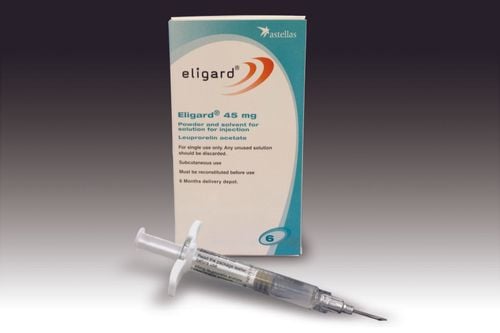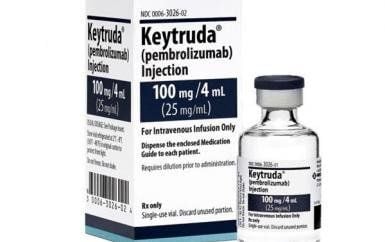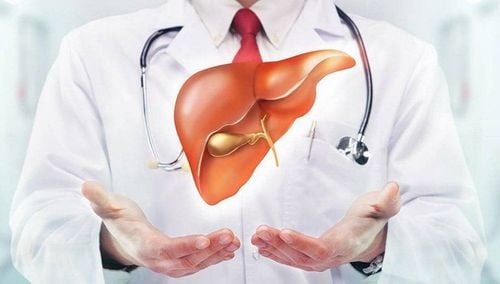This is an automatically translated article.
Posted by Master, Resident Doctor, Doctor Nguyen Thi Hang - Laboratory Doctor - Laboratory Department - Vinmec Times City International General Hospital
Prostate biopsy is indicated by the doctor to diagnose whether the patient has cancer cells or not. From that result, the doctor will make a pathology report and make a treatment plan to ensure the best health for the patient.
1. Significance of prostate biopsy results
Once done, the biopsy sample will be looked at under a microscope to check for any cancer cells. Your doctor will send you a report of the results, called a pathology report. The results will show whether any cancer cells are found. They also show how many biopsies contain cancer cells and how much cancer is present on each biopsy sample.
If cancer cells are found, this can be a big shock and you may not remember everything the doctor or nurse told you. It helps if you bring another family member, partner or friend with you for support when you get your results. You can also ask them to jot down some notes during the appointment.
Watch now: Ultrasound, MRI, PET/CT and biopsy in prostate cancer diagnosis
2. How likely is prostate cancer to spread?
The results of your biopsy will show how far the cancer has spread – in other words, its ability to spread outside the prostate. You may hear this called a Gleason degree, a Gleason score, or a grade group.
2.1.Gleason Grade
When cells are seen under the microscope, they have different phenotypes, depending on their growth rate. The phenotype is calculated from 1 to 5 – called the Gleason score. Scores 1 and 2 were not included in the histopathology report because they resembled normal cells. If you are likely to have prostate cancer, you will have a Gleason grade of 3.4 and 5. The higher the grade, the more likely the cancer has spread beyond the prostate.
2.2. Gleason score (Gleason score)
There may be more than one grade of cancer in the biopsy sample. The overall Gleason score is calculated by adding two Gleason scores together. The first score was the most common histological grade across all samples. The second grade is the highest histological grade. When these two scores are added together, they are called the Gleason score.
Gleason score = highest histology score + highest malignancy score
For example, a biopsy specimen shows:
Most of the cancers found are grade 3 The highest histology of other cancers is grade 4 The Gleason score will be 7 (3+4) If the Gleason score is generated by two identical Gleason degrees, say 3+3, this means that no other Gleason degrees were found.
If you have prostate cancer, your Gleason score will be between 6 (3+3) and 10 (5+5)

2.3. Grade group
Your doctor can tell you about the “grade group”. This is a new system that shows the extent of prostate cancer progression. Your “grade group” will be a number from 1 to 5.
2.4. What does a Gleason score or grade group mean?
The higher the Gleason score or grade group, the more advanced the cancer and the more likely it is to grow and spread. We will explain the difference between Gleason scores and grades given in prostate biopsies, which is a guide only. Your doctor or nurse will tell you what your results mean. Examples are as follows:
Gleason score 6 (3+3), all the cancer cells found on the biopsy are likely to be very slowly progressing, if all it were (grade group 1). Gleason score of 7 (3+4): Most cancer cells found on biopsies are likely to be very slow-growing, if that's all it is. There are a few cancer-like cells that have the ability to progress slowly at a moderate rate (grade group 2). Gleason score of 7 (4+3): Most of the cancer cells found on biopsies are moderately advanced. There are a few cancer-like cells that have the ability to progress slowly at a slow rate (grade group 3). Gleason score of 8 (3+5): Most of the cancer cells found on the biopsy are near-progressive. There are a few cancer-like cells that have the ability to progress slowly at a fast rate (grade group 4). Gleason score of 8 (5+3): Most of the cancer cells found on biopsies are near-progressive. There are a few cancer-like cells that have the ability to progress slowly at a slow rate (grade group 4). Gleason score of 9 (4+5): Most cancer cells found on biopsies are near-moderately advanced. There are a few cancer-like cells that have the ability to progress slowly at a rapid rate (grade group 5). Gleason score of 9 (5+4): Most of the cancer cells found on biopsies are near-progressive. There are a few cancer-like cells that have the ability to progress slowly at a moderate rate (grade group 5). Gleason score of 10 (5+5): Most of the cancer cells found on biopsies are nearly advanced (grade group 5).
3. What type of prostate cancer can I get?
Your doctor will review your biopsy results to tell you what your biopsy results are. For most men who are diagnosed, the most common type of prostate cancer you may see on a biopsy report is adenocarcinoma or follicular carcinoma. (acinar adenocarcinoma). Other types of prostate gland are rarer.
Prostate biopsy is a routine diagnostic test performed at major hospitals, including Vinmec International General Hospital. With a team of highly trained medical and imaging specialists and pathologists, they can take the exact location to be biopsied, and perform accurate pathology, helping doctors to develop a treatment regimen that ensures the best prognosis for patients.
In particular, Vinmec is also equipped with a biopsy machine with suction: Encore Enspire. The feature of integrating biopsy under ultrasound, x-ray and MRI helps to accurately diagnose cancer and remove the tumor thoroughly. There is also an X-ray machine: Mamomat Inspiration: Position the biopsy in the vertical and horizontal direction of the needle (only at Vinmec has these two features).
Please dial HOTLINE for more information or register for an appointment HERE. Download MyVinmec app to make appointments faster and to manage your bookings easily.
Source: https://prostatecanceruk.org/prostate-information/prostate-tests/prostate-biopsy














